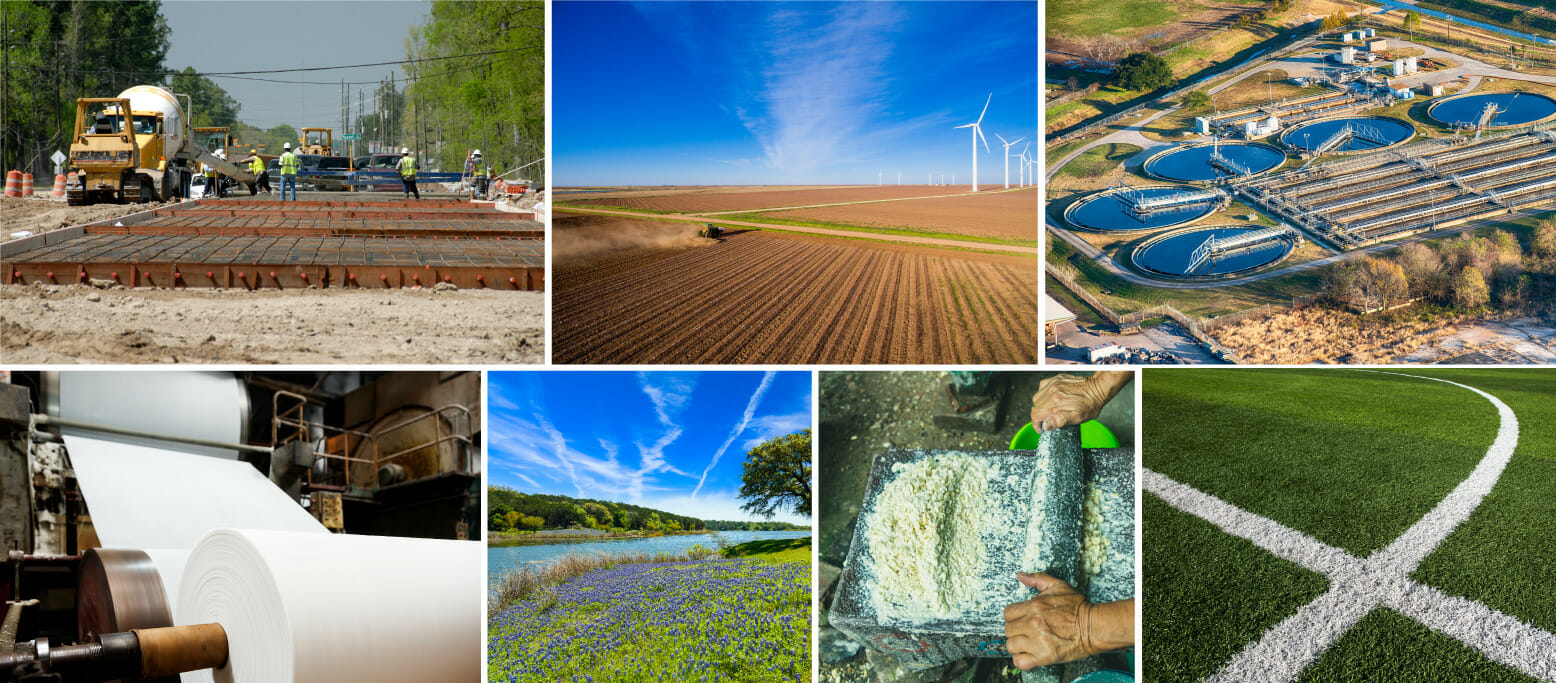It’s a bold claim, but we’ll make it: lime is always around us. You encounter calcium oxide and calcium hydroxide so regularly in your daily life that chances are, you don’t even notice it. From construction to cooking, from rivers to roads, the uses of lime are numerous and diverse—keep reading to find out more.

Construction
One of the primary sectors where lime shines is the construction industry. Lime is used to make mortar, plaster, and concrete, and is often mixed with sand and water to create a durable, long-lasting material that can withstand the test of time. Lime is also used as a stabilizer for soil and as a coating for bricks and other masonry materials. Its ability to enhance long term performance of construction materials both economically and effectively makes lime the best choice when compared to other alternative products.
Agriculture
Need to improve soil quality and increase crop yields? Lime is your secret weapon. Lime is commonly used to neutralize acidic soils by raising the pH level, which improves nutrient availability for plants. Lime also provides essential nutrients such as calcium and magnesium to plants, which are necessary for their growth and development. Not to mention, it’s a disinfectant in animal husbandry. In horticultural farming it can be used as an insect repellent without causing harm to pest or plant.
Treatment of Drinking Water and Wastewater
We would never want to water down the effectiveness of lime. Lime is used in the treatment of drinking water to remove impurities and soften hard water by removing the calcium and magnesium ions that cause water to be hard. Adding lime to wastewater raises the pH level, which causes impurities such as metals and bacteria to precipitate and settle out of the wastewater.

Paper Production
A lesser known but prevalent use of lime is the production of paper. Lime functions as a filler and coating material, increasing the brightness and opacity of the paper. It also works as a bleaching agent, which removes impurities from the paper pulp and makes it whiter. Overall, lime improves the quality of paper while simultaneously reducing its environmental impact.
Environmental Remediation
Lime takes “eco-friendly” to another level, chiefly by its usage in environmental remediation: neutralizing acid rain and treating contaminated soil and water. When added to bodies of water and soils, lime raises the pH level and neutralizes the acidity caused by acid rain. Lime is also used to treat contaminated soil and water by binding with heavy metals and other contaminants and preventing them from leaching into the environment.
Cooking
Slaked lime (also known as calcium hydroxide) has several applications in food and cooking. The biggest one is called nixtamalization, which is the traditional method of preparing maize for making tortillas. Pickling is another culinary use case for slaked lime; soaking the pickles in a solution of calcium hydroxide and water before vinegar gives them a firmer texture. ‘Food additive’ is another identity that slaked lime takes on. Sometimes slaked lime is added to processed foods as a stabilizer or firming agent. It also shows up in baking powder, which helps the dough rise.
Sports
Football, soccer and baseball fields would be incomplete without the boundary lines created with filed chalk. Ground limestone is used to mark athletic fields with sidelines and yard lines. The natural color of ground limestone is white, due to its high contents of calcium carbonate, so it does the job without harming the environment.
The bottom lime? Versatile lime, tested by time plays an indispensable role in all of our lives. Contact us today.
